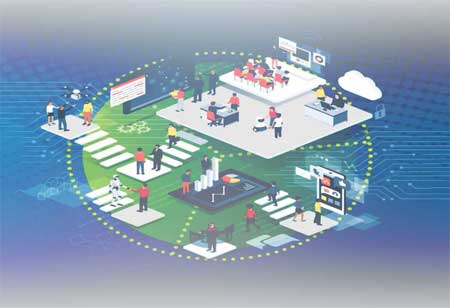THANK YOU FOR SUBSCRIBING
Embracing Data and Analytics to Gain a Competitive Edge
Today, businesses in the Asia-Pacific (APAC) region are leveraging data and analytics to gain a competitive edge, enhance customer experience, and optimise operations.

By
Apac CIOOutlook | Thursday, November 09, 2023
Stay ahead of the industry with exclusive feature stories on the top companies, expert insights and the latest news delivered straight to your inbox. Subscribe today.
Data and analytics are increasingly pivotal in the APAC retail industry, contributing to improved customer experiences, operational efficiency, cost reduction, and innovation.
FREMONT, CA:Today, businesses in the Asia-Pacific (APAC) region are leveraging data and analytics to gain a competitive edge, enhance customer experience, and optimise operations. With the rise of e-commerce and digital transformation, the volume and complexity of data generated by retailers have grown exponentially. This data presents a wealth of opportunities for retailers to gain valuable insights into customer behaviour, market trends, and operational performance.
In 2024, retailers in APAC are expected to invest heavily in data and analytics solutions to drive business growth and innovation. Studies suggest that the big data and analytics market in the region is expected to reach USD 22.6 billion in 2024, with a five-year CAGR of 15.6 per cent.
Data and Analytics Strategies in the APAC Retail Industry
Personalised Customer Experiences: Retailers are using data to create more personalized customer experiences. For instance, they may use data on customer purchase history, browsing behaviour, and demographics to recommend products, send targeted promotions, and offer personalised customer service.
Improved Operational Efficiency: Retailers are using data to improve their operational efficiency. For example, they may use data to optimise inventory levels, forecast demand, and plan staffing.
Reduced Costs: Retailers are using data to reduce their costs. For instance, they may use data to identify areas where they can reduce waste, improve energy efficiency, and negotiate better deals with suppliers.
Innovation: Retailers are using data to innovate and develop new products and services. For example, they may use data to identify new market opportunities, develop new products, and improve existing products and services.
Increased Use of Artificial Intelligence (AI) and Machine Learning (ML): AI and ML are used to automate tasks, improve decision-making, and personalise customer experiences. For example, AI-powered chatbots are used to provide customer service and answer customer questions. ML is being used to recommend products to customers and forecast demand.
Focus on Real-time Data: Retailers are increasingly focusing on real-time data. Such data allows retailers to make faster decisions and respond more quickly to customer needs. For example, retailers are using real-time data to track inventory levels, monitor customer behaviour, and detect fraud.
Cloud Computing: Cloud computing is making it easier and more affordable for retailers to store and analyse data. Cloud computing is also making it easier for retailers to share data with partners and suppliers.
Increased Investment in Data and Analytics Talent: Retailers are investing more in data and analytics talent. Retailers are hiring data scientists, data engineers, and data analysts to help them collect, analyse, and use data.
Overall, data and analytics are playing an increasingly important role in the APAC retail industry. Retailers are using data to improve the customer experience, improve operational efficiency, reduce costs, and innovate.





